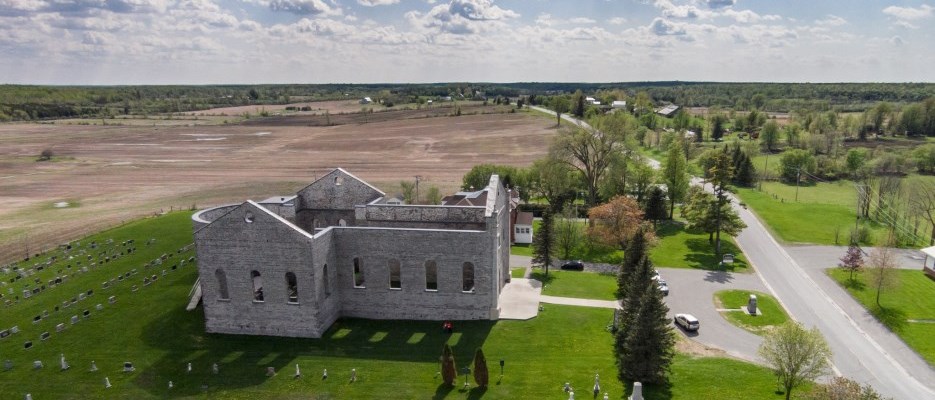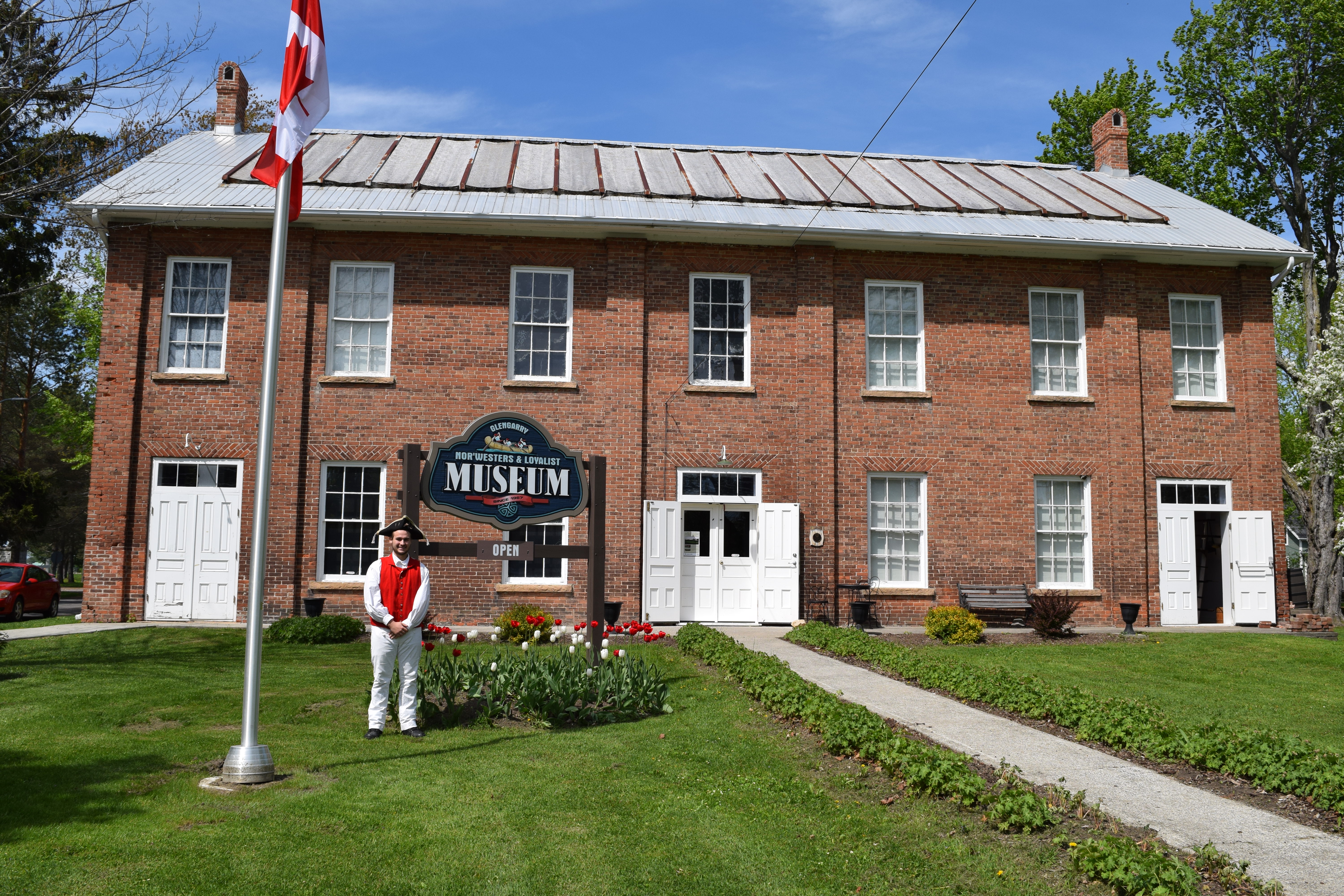History and Historical Attractions

Long on Celtic heritage, South Glengarry is home to many historical landmarks, museums and churches that are enjoyed by both residents and visitors to the Township.
Glengarry County Archives
The Glengarry County Archives is the largest repository of historical records in Eastern Ontario and contains the foremost collection of history about Glengarry County found anywhere.
Historical Attractions
Martintown Grist Mill
The Martintown Grist Mill was built in 1846 by Alexander McMartin. It is located in the centre of the village of Martintown. Built with local fieldstone, the 4-storey Mill measures 30 by 55 feet. It served the village and region as a custom flour milling operation. The mill operated by water power that was eventually supplemented with a gas engine. Commercial use of the mill ended in 1947. The Mill is now owned by the Martintown Mill Preservation Society and is open to the public on weekends during the summer.
Glengarry Nor'Westers and Loyalist Museum
 P.O. Box #69
P.O. Box #69 19651 John Street
Williamstown, ON. K0C 2J0
Phone: 613-347-3547
Email: gnlmuseum@gmail.com
Summer Hours:
Victoria Day Weekend to Labour Day Weekend Wednesdays-Mondays 10am-5pm
Fall Hours:
Labour Day to Thanksgiving Saturdays & Sundays 10am-4pm
Or visits by appointment
The Glengarry, Nor'Westers & Loyalist Museum was opened as part of a centennial project in 1967 as a place to house and celebrate the counties rich history. The museum features two permanent exhibits that depict and preserve the story of the Loyalist settlement of the area as well as the North West Company, a fur trading company with strong local ties that was also key to Canadian Exploration as well as a direct rival of the Hudson Bay Company.
The museum collection features many diverse primary artefacts that demonstrate the many which Glengarry County is tied to larger Canadian historical narratives, such as the compass case and presentation gavel of Sir Alexander Mackenzie, a prominent Scotch-Canadian explorer, and also the ceremonial sword of the Honourable Col. Alexander Fraser, quartermaster of the Glengarry Fencibles in the War of 1812. Also featured at the museum is the only full-size rendering of explorer David Thompsons famous "Map of the North-West Territory of the Province of Canada" one of the culminating works of Thompsons' vast exploration of the North Amercian continent. Many other pieces speak to what life would have been like in this early Upper Canada settlement and how it's legacy of agriculture has grown over the years.
In addition to its permanent exhibits, the museum hosts a minimum of two temporary exhibits each season as well as a variety of family-friendly events and activities.
The museum building itself is a two-story Georgian-style brick structure that was the former schoolhouse in Williamstown built in 1862 on a plot of land donated by Sir John Johnson. The school ran until 1962 and many of the bricks on the front first story have been etched with the names of past students. Also, present on the grounds are the original outhouses which can be found on the north end of the property as well as the museum community garden that is tended to by local summer camp children and volunteers.
To keep up to date on museum goings-on please visit: www.glengarrynorwestersandloyalistmuseum.ca
Sir John Johnson House
The Sir John Johnson Manor House is a National Historical Site located in Williamstown. The building is significant for its architectural design and for being one of the oldest surviving buildings in Ontario. Also important is its historical connection to Sir John Johnson, who encouraged United Empire Loyalists to settle in the St. Lawrence River Valley after the American Revolution. For more information call (613) 347-2356.
St. Raphael's Ruins
Located in St. Raphael's, the ruins were once one of the earliest Roman Catholic churches in English Canada until a fire consumed the church in 1970. Efforts continue today to stabilize the impressive masonry work found in the outer walls, which continues to attract tourists to the beautiful grounds.
Bishop's House of Glengarry
The Bishop's House of Glengarry was the headquarters of Rev. Alexander Macdonell, a heralded military captain who came to St. Raphael's in 1804 and became Bishop of Upper Canada (Ontario's first Bishop). A major figure in Ontario history, the bishop was declared a National Historic Person of Canada in 1924. This house functioned as the organizational centre for Roman Catholics in Ontario until the 1830s. It housed the College of Iona – Ontario's first college, which was moved to Kingston in 1836. The college was the province's first seminary where young men studied for the priesthood and later led parishes throughout the province.
The Bishop's House is now owned by the Glengarry Fencibles Trust. The Trust is undertaking the careful, respectful rehabilitation of the building and landscape.
Historic In-Active Cemeteries
The Township of South Glengarry owns and maintains four Cemetery Sites in memory of our heritage. Spanning from the year 1757 to 1920, families, students, and history buffs alike can follow the link to a geographic information system map to learn more about the locations and history of South Glengarry's early settlers who called this locality home. Many families, predominantly of Glengarry’s Scottish heritage, are documented within these locations throughout the Township and include: Gleninore Cemetery, McMillan Pioneer Cemetery, North Lancaster Baptist Church Cemetery, and the Dalhousie Mills Presbyterian Church.
Contact Us
Township of South Glengarry
6 Oak Street, PO Box 220
Lancaster ON K0C 1N0
Phone: 613-347-1166
Fax: 613-347-3411
